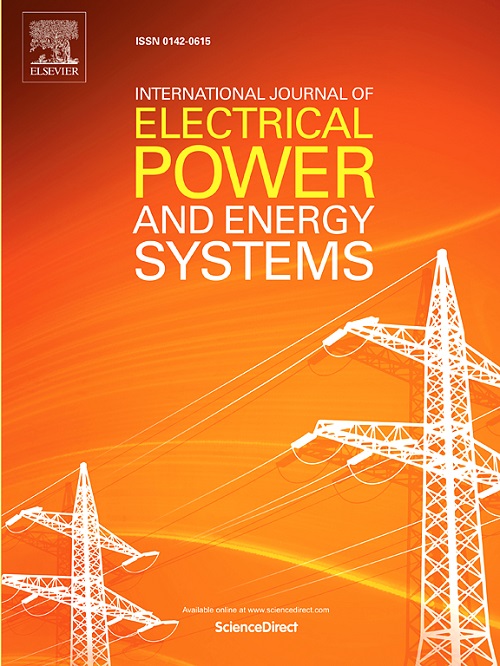考虑非临界负荷电力公平性的孤岛微电网多电弹簧共识控制
IF 5
2区 工程技术
Q1 ENGINEERING, ELECTRICAL & ELECTRONIC
International Journal of Electrical Power & Energy Systems
Pub Date : 2025-04-12
DOI:10.1016/j.ijepes.2025.110663
引用次数: 0
摘要
由于可再生能源发电的不确定性,具有可再生能源的孤岛微电网容易出现电压和频率波动。电弹簧(ES)是缓解这些波动的有效手段。然而,单个ES可能不足以确保每个节点的电压稳定性或支持系统频率调节。为了解决这一问题,提出了一种协调多个ESs参与电压控制和频率调节的共识控制策略。该策略由三层组成。上层基于共识算法为每个节点生成参考电压和参考角频率。中间层计算ES参考输出电压的d轴和q轴分量,进而合成ES的参考输出电压。底层采用自适应滑模控制,保证ES的实际输出电压实时跟踪参考输出电压。该策略在保证节点电压和系统频率稳定的同时,保证各ES的无功输出比相等,各NCL的电压偏差比一致。本文章由计算机程序翻译,如有差异,请以英文原文为准。
Consensus control of multiple electric springs considering non-critical load electricity fairness in islanded microgrid
Due to the uncertainty of renewable energy source (RES) generation, the islanded microgrid with RESs is prone to voltage and frequency fluctuations. The electric spring (ES) is an effective means to mitigate these fluctuations. However, a single ES may not be sufficient to ensure voltage stability for each node or support system frequency regulation. To address this issue, a consensus control strategy is proposed to coordinate multiple ESs participating in voltage control and frequency regulation. This strategy consists of three layers. The upper layer generates reference voltage and reference angular frequency for each node based on a consensus algorithm. The middle layer calculates d-axis and q-axis components of ES reference output voltage, subsequently synthesizing the reference output voltage of ES. The bottom layer utilizes adaptive sliding mode control to ensure actual output voltage of ES tracks the reference output voltage in real time. This strategy ensures the reactive power output ratio of each ES is equal and that there is consistency in the voltage deviation ratio of each NCL while achieving nodes voltage and system frequency stability.
求助全文
通过发布文献求助,成功后即可免费获取论文全文。
去求助
来源期刊
CiteScore
12.10
自引率
17.30%
发文量
1022
审稿时长
51 days
期刊介绍:
The journal covers theoretical developments in electrical power and energy systems and their applications. The coverage embraces: generation and network planning; reliability; long and short term operation; expert systems; neural networks; object oriented systems; system control centres; database and information systems; stock and parameter estimation; system security and adequacy; network theory, modelling and computation; small and large system dynamics; dynamic model identification; on-line control including load and switching control; protection; distribution systems; energy economics; impact of non-conventional systems; and man-machine interfaces.
As well as original research papers, the journal publishes short contributions, book reviews and conference reports. All papers are peer-reviewed by at least two referees.

 求助内容:
求助内容: 应助结果提醒方式:
应助结果提醒方式:


